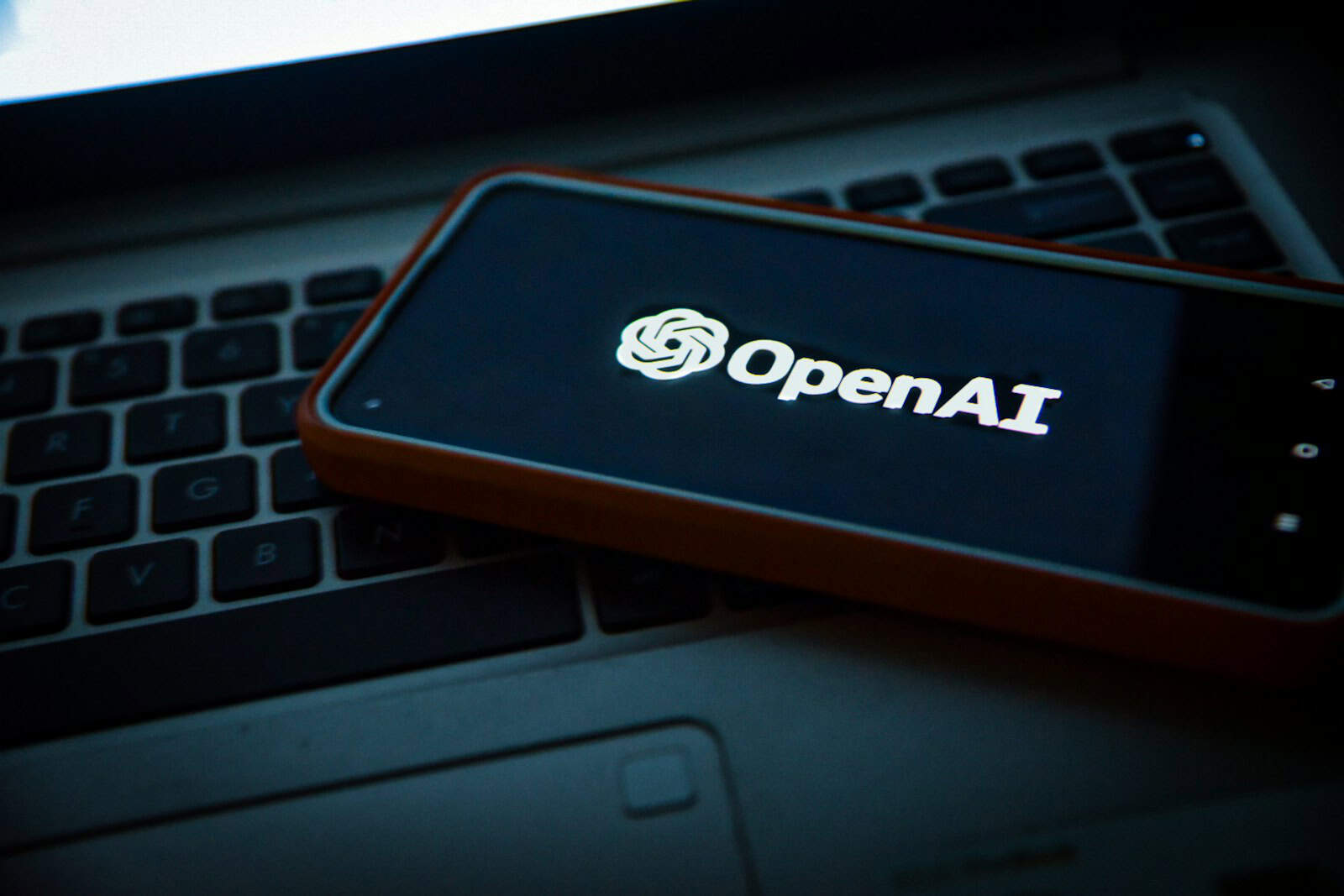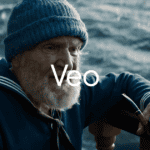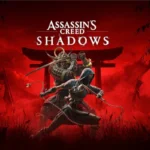AI-powered image generation has exploded in 2025—not just in art circles, but in business, design, advertising, education, and beyond. What started as a novelty is now reshaping how people create visual content. Whether you’re an illustrator, marketer, or just curious about the future of creative tools, knowing which platforms offer the best features, quality, and innovation is essential.
Here’s a breakdown of the most important updates and the top tools defining the space right now.
Adobe Firefly Goes Mobile & Gets Major Upgrades
Adobe is doubling down on AI innovation. The launch of the Firefly mobile app (for iOS and Android) brings text-to-image and text-to-video generation to smartphones. Key features like Generative Fill, AI-driven video editing, and voice-powered commands put high-end creative power into your pocket.
What makes this release stand out is its integration with Creative Cloud, syncing your assets across devices for seamless professional workflows. Plus, Firefly now supports collaborative AI boards, where creators can use tools from other models like OpenAI’s DALL·E, Google Imagen, Luma, and Pika—all within the Adobe ecosystem.
The new Image 4 and Image 4 Ultra models also deliver more realism, better prompt alignment, and style diversity. Premium use is credit-based and starts around $10/month—ideal for professionals who already use Photoshop, Illustrator, or Premiere.
DeepSeek’s Janus Pro Is Shaking Up the Open-Source Scene
China’s DeepSeek has introduced Janus Pro, a multimodal, open-source model that’s making waves by outperforming DALL·E 3 and Stable Diffusion 3 Medium in multiple benchmark tests. Janus Pro handles both image generation and text/image inputs, offering surprisingly high fidelity for a free alternative.
Its open-source nature is a major win for developers, academic researchers, and tech-savvy artists looking for more control and transparency over their workflows.
Who’s Leading the Pack? GPT-4o, Midjourney, DALL·E 3, and More
ChatGPT (GPT-4o)
The all-new GPT‑4o from OpenAI isn’t just a chatbot—it also powers image generation within ChatGPT Pro and Team plans. It excels in stylistic versatility, natural image layouts, and scene coherence. For general-purpose visuals, GPT‑4o is now one of the most consistent and intelligent tools available.
Midjourney (v6)
If you’re looking for pure visual style, Midjourney v6 is still king. It produces cinematic, stylized, surreal, and abstract art that continues to set the bar for AI aesthetics. Its Discord-based interface may be unconventional, but the artistic results are unrivaled for mood boards, game design, and concept art.
DALL·E 3 (via Bing or ChatGPT)
DALL·E 3 still leads for photorealism and fine-grain detail. It’s ideal for realistic people, product mockups, and editorial-style illustrations. Now integrated directly into Microsoft Designer and Bing Image Creator, it offers a streamlined user experience with free options for casual users.
Special Use Case Stars
Ideogram 3.0
This tool is the new go-to for text within images. Most AI generators still struggle with rendering clean, legible writing—but Ideogram nails it. That makes it perfect for creating marketing graphics, posters, or infographics where textual accuracy matters.
Flux.1 Kontext
An emerging favorite for designers, Flux’s new model offers layout control, consistent branding elements, and template-based designs that are ideal for businesses or marketing teams. It competes head-to-head with tools like Recraft for commercial consistency.
🖼️ More Noteworthy Options Worth Exploring
- Imagiyo AI: Offers a one-time payment (~$40) for lifetime access and commercial rights. Good for budget-conscious creators.
- Microsoft Designer: Simple UI powered by DALL·E tech. Best for social media marketers or quick-use scenarios.
- Canva AI Art Generator: Integrated into Canva’s design suite, this one’s ideal for students, teams, or beginners working on flyers, thumbnails, and presentations.
🎯 At-a-Glance Comparison
| Tool | Strengths | Best For |
|---|---|---|
| Adobe Firefly | Video + image support, Creative Cloud sync | Pro users & Adobe ecosystem creatives |
| ChatGPT GPT‑4o | Smart prompts, clean layout, flexible outputs | General use, educators, content creators |
| DALL·E 3 | High realism, detailed portraits | Editorial, photorealism, product design |
| Midjourney | High-style, creative freedom | Artists, illustrators, concept designers |
| Ideogram | Accurate text rendering | Posters, ads, visual quotes |
| Flux / Recraft | Consistent layout and branding | Design teams, marketers, branding assets |
| Janus Pro | Open-source, customizable, high performance | Developers, research labs, tinkerers |
📌 Final Take
2025 is the year that AI illustration went truly mainstream—on phones, in creative suites, and across open platforms. Whether you’re chasing photorealism, stylized art, or layout precision, there’s now a specialized AI tool to match your need and your budget.
- For artistic freedom → go Midjourney.
- For realism → DALL·E 3 or GPT‑4o are top picks.
- For design accuracy and collaboration → Firefly or Flux are ideal.
- For experimental or open workflows → Janus Pro is your playground.
No matter your role—designer, teacher, developer, entrepreneur—2025’s lineup gives you the creative power to turn ideas into stunning images faster than ever.
A Look At The Top Ai Art Tools
Creating digital art has never been easier thanks to AI technology. AI art generators let anyone turn text into beautiful images in seconds. The best AI illustration generators in 2025 offer incredible features that help both beginners and professionals bring their creative visions to life.
Finding the right AI art tool can be tricky with so many options available. Some tools like Ideogram excel at combining AI and real elements, while others like Midjourney are perfect for character art. Each tool has different strengths and pricing models to consider before making a choice.
1. DALL-E 3 by OpenAI
DALL-E 3 stands out as one of the most powerful AI image generation tools available today. Released by OpenAI, this advanced system creates images from text descriptions with remarkable accuracy.
What makes DALL-E 3 special is its ability to understand detailed prompts. The system understands significantly more nuance and detail than previous versions, letting users translate complex ideas into accurate visuals.
Many users find that DALL-E 3 excels at creating both realistic images and imaginative concepts. It often produces the best results with surreal fantasies, making it perfect for creative projects.
The quality of DALL-E 3’s output is consistently high. Users can expect clear, professional-looking illustrations that closely match their text prompts.
For those wanting to create a series of consistent images, DALL-E 3 works well with specific instructions. Artists can maintain style consistency across multiple images by using similar prompt structures.
Access to DALL-E 3 comes through several channels. Users can try it through OpenAI directly or via Microsoft Designer’s Image Creator, which is powered by the same technology.
The tool handles a wide range of requests, from photorealistic portraits to abstract art and commercial illustrations. This versatility makes it valuable for both professional designers and casual users.
DALL-E 3 continues to improve with updates. OpenAI regularly enhances the system’s capabilities, making it more responsive to user needs and creative challenges.
2. Ideogram
Ideogram has emerged as a standout player in the AI image generation field. This tool offers impressive capabilities that appeal to both casual users and professionals who need quality AI-generated illustrations.
What makes Ideogram special is its exceptional text rendering ability. The platform can generate text in images better than any other model, solving a common frustration with many AI art tools that struggle with readable text.
The release of Ideogram 2.0 brought significant improvements that put it on par with industry leaders. Many users find it outperforms competitors like MidJourney and DALL-E 3 in certain aspects, particularly in prompt coherence.
Ideogram’s user interface emphasizes accessibility with its tagline “Image generation for everyone.” The platform balances powerful features with a straightforward experience that doesn’t require technical expertise.
Expert reviews highlight Ideogram’s value for personal projects. Some AI art enthusiasts consider it one of the best tools available for translating text prompts into visual content that closely matches user intent.
The tool appears on multiple “best of” lists for 2025, including Tom’s Guide, which notes it as a personal favorite among current AI image generators. This recognition reflects Ideogram’s growing reputation in a competitive market.
For users prioritizing text integration in their AI-generated imagery, Ideogram offers a compelling solution. Its ability to render readable text opens possibilities for creating infographics, memes, signs, and other text-heavy visuals that other generators often struggle with.
3. Midjourney
Midjourney stands out as a powerful AI illustration generator that has gained significant popularity among artists and designers. It operates through Discord, which gives it a unique interface compared to other generators.
The platform is known for producing very high quality images that often have an artistic, painterly quality. Many users find that Midjourney excels at creating images with dramatic lighting and composition.
One of Midjourney’s strengths is its ability to interpret abstract concepts and turn them into visually striking illustrations. The system understands stylistic references well, making it easier to generate artwork in specific art styles.
The learning curve for Midjourney can be steeper than some competitors. Users need to learn specific prompt formatting to get the best results, which might take time for beginners to master.
Midjourney describes itself as an independent research lab exploring new ways of thought and expanding human imagination. This philosophy shows in how the AI approaches image creation.
When compared to other tools, Midjourney and DALL-E 3 represent two of the most capable AI art generators available today. Each has its own strengths, but Midjourney is often praised for its aesthetic quality.
Many digital artists believe that each AI image generator has specific strengths, but Midjourney remains “very solid” overall. It performs exceptionally well for creating illustrations with artistic flair.
The subscription model offers different tiers, giving users various amounts of generation time and features. For professional illustrators, the higher tiers provide the speed and capacity needed for commercial work.
Regular updates have improved Midjourney’s capabilities significantly since its launch. Recent versions have enhanced its ability to handle details like hands and faces, which were challenging for earlier AI art tools.
4. Stable Diffusion
Stable Diffusion stands out as a powerful open-source AI image generator that has gained significant popularity among artists and designers. Unlike some competitors, it can be run locally on your own computer with sufficient GPU power, giving users more control over the generation process.
The tool creates high-quality images from text descriptions using deep learning technology. Users simply enter a prompt describing what they want to see, and Stable Diffusion transforms these words into visual content within seconds.
You can access Stable Diffusion through various interfaces. Many people use it through free online platforms that don’t require technical knowledge. More advanced users might prefer running it locally for faster processing and privacy benefits.
One key strength of Stable Diffusion is its customization options. Users can fine-tune numerous parameters to get exactly the style and results they want. This flexibility makes it a favorite among professionals who need precise control over their AI-generated artwork.
The community around Stable Diffusion continues to grow, with developers creating new models and extensions that expand its capabilities. These community contributions have helped it become known for customization options that rival commercial alternatives.
Recent updates have improved the quality and realism of generated images. The system now handles complex prompts better and produces more coherent results than earlier versions. However, like other AI generators, it sometimes struggles with text and human anatomy details.
Price-wise, Stable Diffusion offers excellent value. The core technology is free, though some hosted versions charge for faster processing or additional features. This accessibility has helped it become one of the best AI image generators in 2025 according to several tech publications.
5. Google’s ImageFX
Google’s ImageFX has emerged as a powerful contender in the AI image generation space. This free tool transforms text prompts into visually striking images with impressive accuracy and detail.
Recent tests show that ImageFX has dethroned Microsoft Designer’s Image Generator as the top AI image generator overall. Users can access it through Google Labs, making it readily available to anyone wanting to experiment with AI art creation.
What makes ImageFX stand out is its ability to create remarkably realistic images. Some users have noted that its output competes with established platforms like Flux and Midjourney in terms of quality and realism.
The user interface is straightforward. After entering a prompt, ImageFX generates four different image variations. Users can then copy, download, or share any of these images easily.
For beginners in AI image generation, ImageFX serves as an excellent starting point. Its intuitive design and free access make it perfect for those just beginning to explore creative AI tools without requiring technical expertise or subscription fees.
Reviewers evaluate ImageFX based on how well the generated images match the given prompts, the creativity of results, and other key factors on a 10-point scale. The platform consistently scores well in these assessments.
The technology behind ImageFX allows users to explore with endless imagination. Artists, content creators, and casual users alike find value in its ability to quickly visualize concepts that might otherwise require extensive graphic design skills.
While not without limitations, ImageFX represents Google’s strong commitment to making advanced AI tools accessible to the general public. Its ongoing development suggests that capabilities will continue to improve over time.
6. Microsoft Designer’s Image Generator
Microsoft Designer offers a free AI image generator that creates images from text descriptions. This tool has become popular for its ease of use and integration with Microsoft’s suite of products.
Users simply type a description, and the AI creates matching visuals. The system can generate a wide range of styles from realistic photos to artistic renderings, making it versatile for different projects.
The tool works directly in your browser without requiring any downloads. This accessibility makes it convenient for quick projects when you need an image in seconds.
Microsoft Designer’s image tool connects with other Microsoft products, allowing for seamless workflow integration. Images created can be easily exported to other applications or downloaded for use elsewhere.
The quality of images has improved significantly with recent updates. Microsoft’s AI draws from extensive training data to produce results that often match user expectations.
For beginners, the simple interface removes technical barriers. No graphic design experience is needed to create professional-looking visuals for social media, presentations, or websites.
The Image Creator feature also offers customization options. Users can refine their results by adjusting parameters or providing more detailed prompts for better outcomes.
While once considered less powerful than some competitors, recent tests show Microsoft’s generator has improved dramatically. The tool now produces high-quality images comparable to specialized image generation platforms.
Business users appreciate the commercial usage rights that come with images created through the platform. This clarity around licensing makes it particularly valuable for professional content creation.
7. Canva’s Magic Media
Canva’s Magic Media stands out as a user-friendly AI image generator that’s perfect for beginners and casual creators. This tool lets users create images from text prompts without needing design experience or technical skills.
The free version allows users to generate up to 50 images, making it accessible for those wanting to try AI art without a financial commitment. Magic Media is fully integrated within Canva’s design platform, so created images can be immediately used in other projects.
One key advantage of Magic Media is its simplicity. Users simply type a description, and the AI generates multiple options based on that prompt. The interface is clean and straightforward, removing barriers for newcomers to AI technology.
Creators can select from different visual styles and compositions to better match their vision. This flexibility helps users achieve results closer to what they imagined without complex prompt engineering.
Magic Media works well for creating fun writing prompts and educational materials, making it especially valuable for teachers and education professionals. The tool excels at generating conceptual illustrations and basic scenes.
While powerful, Magic Media has limitations. It may not be suitable for every project, particularly those requiring highly specific or technical outputs. The quality varies depending on the complexity of the request.
Canva has expanded its AI image options by also offering DALL-E by OpenAI and Imagen by Google Cloud within its platform. This gives users multiple AI engines to choose from depending on their specific needs.
For quick, practical image generation within an already popular design tool, Canva’s Magic Media provides an excellent entry point into AI illustration creation.
8. Runway
Runway has evolved into a powerful platform for AI-generated imagery and video creation. This applied research company positions itself as a tool for “human imagination” rather than just another AI generator.
The platform stands out for its cinematic quality. Many creators consider Runway’s image generation capabilities to be among the most cinematic available, making it ideal for artists and filmmakers seeking professional-looking results.
One of Runway’s key features is its custom training option. Users can train their own AI image generator to create customized styles and characters, providing greater control over the creative process.
Runway isn’t limited to still images. The platform has gained significant attention for its video generation capabilities, ranking as one of the best AI video generators in 2025. This versatility makes it a comprehensive tool for different creative needs.
The Image to Image feature deserves special mention. It allows users to transform existing images with AI assistance, opening up editing possibilities beyond what traditional software offers.
Runway’s interface balances power with accessibility. While offering advanced tools, it remains approachable enough for creators who aren’t technical experts but want professional results.
In competitive comparisons, Runway consistently performs well against other leading platforms. Community discussions on platforms like Reddit highlight its strengths relative to competitors like Kling, LumaLabs, and Pika.
For creators seeking an AI tool that bridges artistic vision with technical capability, Runway offers a compelling package. Its emphasis on cinematic quality and versatility across both image and video generation makes it worth considering for serious creative projects.
9. Imagen by Google Cloud
Imagen by Google Cloud stands out as a powerful text-to-image AI system. It can create realistic images from simple text descriptions without requiring any coding knowledge.
The latest version, Imagen 3, produces high-quality images with better detail and richer lighting effects. Many users find it creates fewer distracting artifacts compared to other AI image generators.
Google Cloud’s Imagen excels at generating images of people of all ages. This feature makes it versatile for various creative projects that need human representation.
You can access Imagen through Google Cloud’s platform or as part of Canva’s AI tools. This gives users multiple ways to incorporate this technology into their workflow.
In recent tests, Google’s image generation capabilities have impressed reviewers. The technology has even outperformed Microsoft’s Designer Image Generator in some evaluations.
The system works by interpreting natural language prompts. Simply describe what you want to see, and Imagen transforms your words into visuals in seconds.
Imagen fits well for businesses needing quick visual content creation. Marketing teams, designers, and content creators can rapidly produce custom images without specialized design skills.
Unlike some competitors, Imagen focuses on practical image creation rather than artistic experimentation. This makes it suitable for professional applications where clarity matters.
10. Craiyon
Craiyon is a free AI image generator that creates images from text descriptions. Originally known as DALL-E mini, this tool has gained popularity for making AI art creation accessible to everyone without cost.
The interface is straightforward and user-friendly. Just type your prompt, click generate, and watch as Craiyon produces nine different interpretations of your text.
While the image quality isn’t as refined as premium options, Craiyon delivers impressive results considering it’s completely free. The generated images have a distinctive style that some users find charming.
Processing time can be longer than paid alternatives. Expect to wait anywhere from a few seconds to a minute for your creations, depending on server load and complexity of your prompt.
Craiyon stands out for its lack of usage limits. Unlike many competitors that restrict free users to a set number of generations, you can create as many images as you want without hitting a paywall.
The tool works directly in your browser with no download required. This makes it convenient for quick projects when you need visual ideas without committing to software installation.
For beginners exploring AI art, Craiyon offers a risk-free entry point. Its simple approach lets users experiment with different prompts to learn what works best.
The community around Craiyon is active and growing. Many users share their creations online, providing inspiration and prompt ideas for newcomers.
Despite its limitations, many consider Craiyon one of the best free options available. It strikes a good balance between accessibility and capability for casual users.
How AI Illustration Generators Work
AI illustration generators transform text descriptions into visual artwork through complex systems that analyze patterns and learn from existing images. These tools have revolutionized digital art creation by making it accessible to people without traditional artistic skills.
Algorithms Behind AI Art
AI art generators use deep learning models called Generative Adversarial Networks (GANs) and diffusion models to create images. These systems work with millions of existing artwork examples to understand visual concepts.
When you type a prompt like “sunset over mountains with purple sky,” the AI breaks this down into key elements it recognizes: sunset, mountains, and purple sky. It then combines these elements based on patterns it learned during training.
Most modern AI art tools like DALL·E by OpenAI use a two-step process:
- Text encoding: Converting your words into numerical representations
- Image generation: Creating pixel patterns that match those numerical values
The quality depends on how well the AI understands your prompt and its training diversity.
Role of Machine Learning in Art Creation
Machine learning powers AI art through vast datasets of images paired with descriptions. These systems don’t just memorize images—they learn concepts like “happiness,” “vintage,” or “abstract.”
The AI develops an internal “understanding” of visual styles after analyzing millions of examples. Tools like Midjourney and Stable Diffusion continuously improve through feedback loops, where user interactions help refine outputs.
Key machine learning elements in AI art include:
- Training diversity: Better results come from varied image sources
- Parameter tuning: Adjustments that influence style, composition, and detail
- Latent space navigation: The “creative thinking” area where the AI blends concepts
Each improvement in machine learning models brings more control and unique artwork possibilities to users with simple text prompts.
Benefits of Using AI Illustration Generators
AI illustration generators offer significant advantages for artists, designers, and businesses looking to create visual content quickly. These tools transform simple text prompts into detailed artwork while providing creative flexibility.
Efficiency in Creative Processes
AI art generators dramatically cut down production time for illustrations. What might take hours or days manually can be completed in seconds or minutes using AI-powered tools. This efficiency is particularly helpful during tight deadlines or when multiple design concepts need exploration.
For businesses, this means reduced costs for visual content creation. Instead of hiring illustrators for every project, companies can use AI to generate initial concepts or even final illustrations.
The quick iteration process also helps refine ideas. Artists can generate multiple versions of a concept instantly, compare them side by side, and select the most effective option. This speeds up the creative workflow and eliminates the frustration of manual revisions.
Many platforms also include batch processing capabilities, allowing users to create numerous variations simultaneously rather than one at a time.
Diverse Artistic Styles
AI illustration generators excel at producing images in a wide range of artistic styles. Users can create illustrations resembling oil paintings, watercolors, pencil sketches, 3D renders, and countless other techniques without mastering each medium individually.
This versatility enables consistent brand aesthetics across various marketing materials. A company can maintain its visual identity while exploring different artistic approaches for different campaigns or audiences.
For creative professionals, AI tools offer inspiration through style exploration. Illustrators can experiment with unfamiliar techniques or historical art movements to discover new directions for their work.
Some practical applications include:
- Creating concept art for products or projects
- Developing custom illustrations for websites and apps
- Generating unique visual content for social media campaigns
- Producing custom images for presentations and marketing materials
Ethical Considerations
AI image generators raise important ethical questions that users should understand before incorporating these tools into their creative workflows. These issues affect both the creators and the broader artistic community.
Copyright and Ownership Issues
When using AI art generators, questions about ownership and copyright immediately arise. Most AI systems train on millions of existing artworks, often without clear permission from original creators.
Some AI-generated images may infringe on copyrighted material, creating legal risks for users who commercialize these outputs. Questions to consider:
- Who actually owns an AI-generated image?
- Does attribution belong to the AI, the developer, or the user?
- How much modification makes an AI image uniquely yours?
Companies like Adobe have begun addressing these concerns with programs like Firefly, which claims to train exclusively on licensed content and public domain works.
For professional use, always check the terms of service for each AI tool regarding commercial rights and attribution requirements.
Impact on Human Creatives
The rise of AI art tools has sparked debates about their effect on professional artists, illustrators, and designers. Many worry these technologies threaten livelihoods and creative industries.
Artists express concerns about:
- Job displacement as companies choose AI generation over hiring humans
- Devaluation of human creativity and artistic skills
- Loss of fair compensation for their work
Some ethical approaches include:
- Using AI as a collaborative tool rather than a replacement
- Compensating human artists whose styles influenced the AI
- Being transparent about AI usage in commercial projects
The ethical implications extend beyond economics to questions about authenticity and originality. Many argue that AI-generated art lacks the human context and intention that gives art meaning.
Some artists have embraced AI tools while acknowledging that these images represent collective human creativity rather than purely original work.
Frequently Asked Questions
AI illustration generators have transformed digital art creation with innovative features and varying capabilities. These tools offer different options for both beginners and professionals seeking to create unique visuals.
What are the top-rated free AI illustration generators available?
Google’s ImageFX is considered the best free AI image generator for many users. It produces high-quality images without requiring a paid subscription.
Stable Diffusion also offers a free open-source option that many artists and designers prefer. The platform provides extensive customization for those willing to learn its interface.
DALL-E 3 includes limited free credits through the ChatGPT interface, making it accessible for casual users who want to try AI illustration.
Which AI illustration generators offer the best results without a subscription?
Several AI tools provide quality results with free tiers or one-time payment options. Stable Diffusion stands out as it’s completely free and open-source, though it requires some technical knowledge to set up.
Google’s ImageFX delivers impressive results on its free tier with reasonable generation limits. The quality rivals many paid options.
Some platforms like Ideogram offer generous free trial periods with nearly full functionality before requiring payment.
How do AI art generators compare in terms of image quality and creativity?
Midjourney is widely recognized for producing the most artistic and aesthetically pleasing images. Its outputs often have a distinctive painterly quality many users prefer.
DALL-E 3 excels at following precise instructions and creating photo-realistic images. It understands complex prompts better than most competitors.
Stable Diffusion offers the most customization potential, allowing users to fine-tune virtually every aspect of generation. This makes it powerful but requires more learning.
Are there any AI illustration tools integrated into popular design platforms?
Yes, several design platforms now feature AI image generation tools. Envato Elements has introduced AI ImageGen to complement their existing design resources.
Adobe has integrated Firefly AI into Creative Cloud applications like Photoshop and Illustrator. This allows seamless generation and editing within familiar software.
Canva includes a text-to-image generator that works within their design interface, making it simple for non-technical users to create AI illustrations.
What features should I look for when choosing an AI-powered image creation software?
Prompt accuracy is crucial – better AI tools interpret instructions correctly the first time. This reduces the need for multiple attempts.
Style variety matters for creative flexibility. Top generators should produce diverse artistic styles from photorealistic to abstract.
Resolution and quality options determine the usability of images. Professional needs require at least 1024×1024 pixel output with clean details.
Can AI illustration generators effectively mimic different artistic styles?
Yes, modern AI generators can convincingly mimic many artistic styles. Midjourney excels at recreating painterly techniques from impressionism to digital art styles.
DALL-E 3 can accurately follow style references when provided with examples. It’s particularly effective at mimicking contemporary illustration styles.
The best AI art generators have been trained on diverse art collections, enabling them to understand and reproduce specific artistic techniques when prompted correctly.







